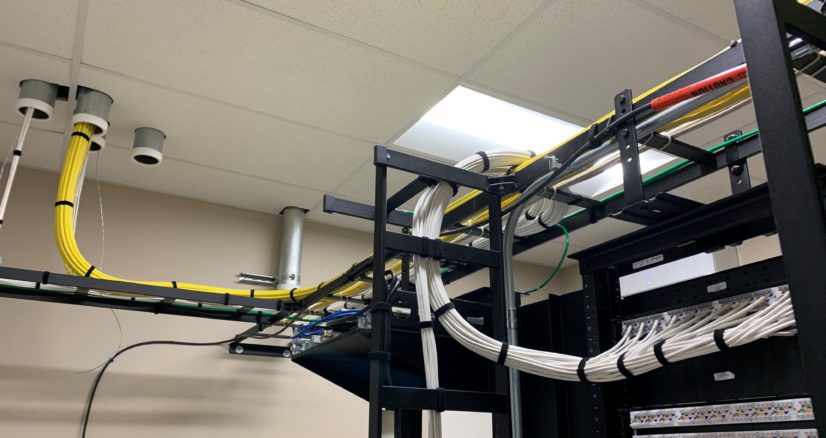Whether you’re building a new space or retrofitting an existing location to fit your evolving needs, structured cabling is a must for most businesses and organizations. However, installing structured cabling can be daunting given the many components that are involved, the safety hazards associated with the task, and the ultimate impact of the completed project. Therefore, it’s usually best to work with an experienced professional.
Knowing what to look for in structured cabling design can help you make the right decisions about the installation from start to finish. Read on to learn more.
What Is Structured Cabling?
Structured cabling is an infrastructure design that helps businesses organize the cabling used to support their IT, voice and data systems. With optimized structured cabling, your organization’s systems will be better supported, higher performing and more scalable. In addition, structured cabling allows for maximum system availability and enables a cabling system to easily adapt to changes in the future.
Many organizations rely on their cabling infrastructure to run necessary systems each and every day. From internet to telecommunications to security, an expertly designed cabling system can help improve system functionality, versatility and efficiency.
The Structured Cabling Design Process
When it comes to structured cabling design, there are a few basic steps to the process.
It begins with a site survey, during which a BICSI RCDD cabling professional will evaluate your cabling needs and physical location. They will establish where and how to run the cabling and diagnose any potential issues that may make installation more difficult. Some of these issues include physical boundaries such as walls, piping and workstations.
Once this has been completed, the professional will take into account the infrastructure of your space, your business’s needs and potential issues as noted in the survey as they design the structured cabling system’s general layout. This design process is necessary to ensure that everything is strategically placed in such a way that your needs are met and your data cabling performance is optimized. During design, the location of cabling, racks, equipment and other aspects of the system will be laid out and then evaluated by you and the installation team to make sure it meets the appropriate standards.
Characteristics to look for in a good structured cabling design include:
- Does the design live up to the latest industry standards?
- Can the design support multiple services, including telecommunications, video, network, etc.?
- Does the backbone of the system promote optimized performance?
- Is the structured cabling designed to optimize communication between the various systems it supports?
- Are the cables, connectors, and equipment high-performing and backed by manufacturer warranties?
Once the design has been finalized, the structured cabling provider will help you decide on the right kind of cabling for your needs. Data cabling types vary from Ethernet (Category 6 & 6a) to fiber optic cabling and beyond, each with its own pros and cons in terms of cost, performance and usage. Some businesses will need multiple types of cabling, depending on their infrastructure. It’s important to know which types are best for your business, and to have reliable warranties on the data cabling, so working with a reputable and experienced installer is essential.
The final step is to install the cable. This is done by running the data cabling throughout the site, typically through ceilings and walls. During this process, the installer will remove old or unnecessary cables and ensure the new system is easily accessible for future needs. The process can take anywhere from one afternoon to multiple days, depending on the size of the project.
Long-Term Benefits of Structured Cabling
Once a structured cabling design has been implemented, you’ll find that there are many long-term benefits. New equipment can be quickly and easily added to the system, and updates to existing systems can be made without seriously affecting functionality.
With the help of an experienced data cabling professional, you can make the most of structured cabling and reap the benefits for years to come.
Taylored — Providing Structured Cabling for the Indianapolis Area
For more than 35 years, Taylored has been providing technology, structured cabling and managed IT solutions throughout the Indianapolis area and beyond. Our experience helping create custom structured cabling solutions for organizations of all sizes and industries has helped establish us as the premier partner for Indiana businesses looking to update or establish their cabling infrastructure.
When working with our client partners on structured cabling projects, we are committed to creating custom solutions with the highest quality products. All of our products are backed by reliable manufacturer warranties. We also install all of our cabling systems to TIA/EIA-568 C, IEEE and BICSI standards using certified installers. Taylored takes time to listen to our client partners, create the ideal cabling solution for their needs and support their solution — from before installation to after the completion of the project.
Contact us today to discuss your structured cabling needs, and see how the Taylored team can make all the difference in your cabling infrastructure.

